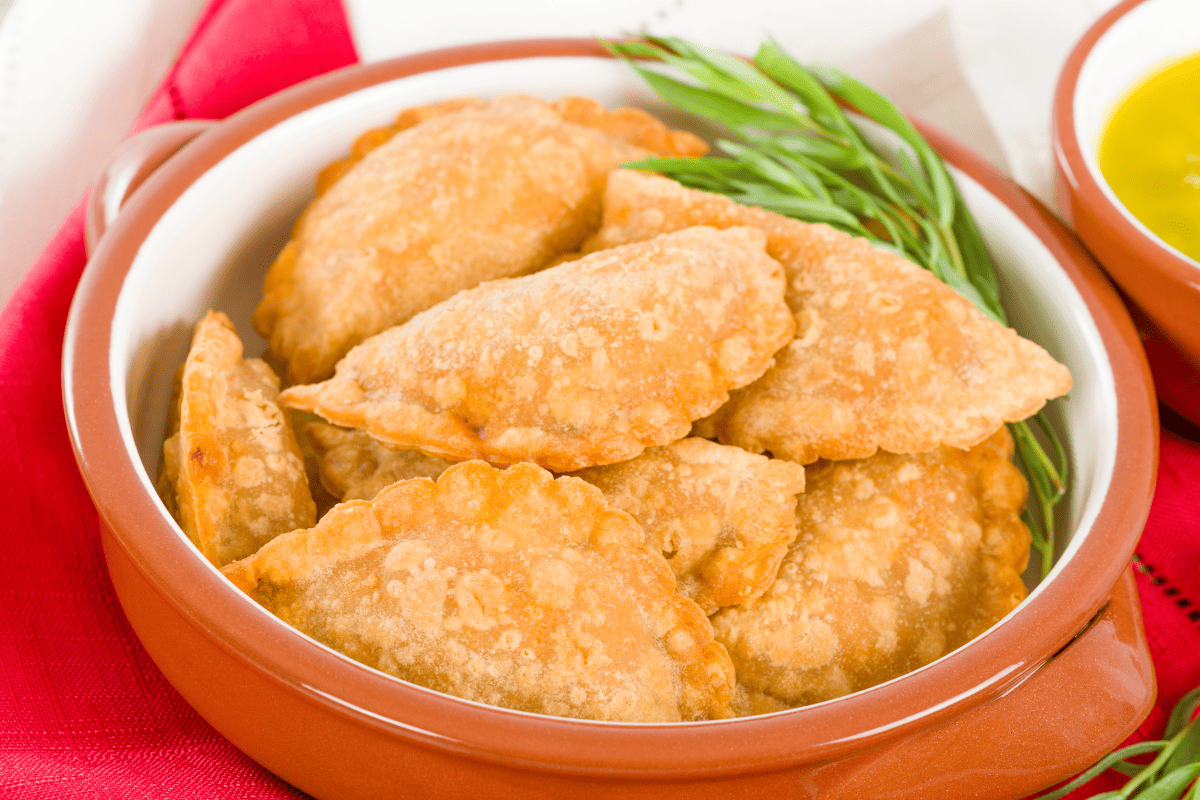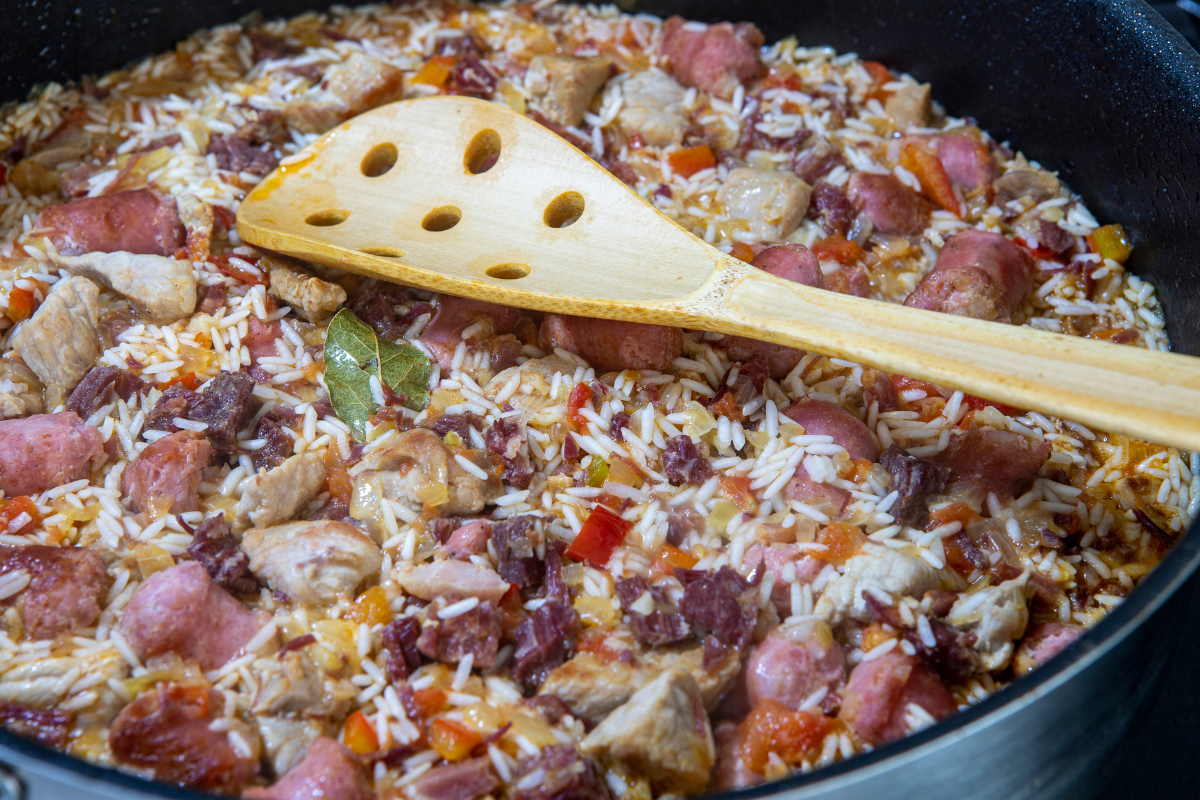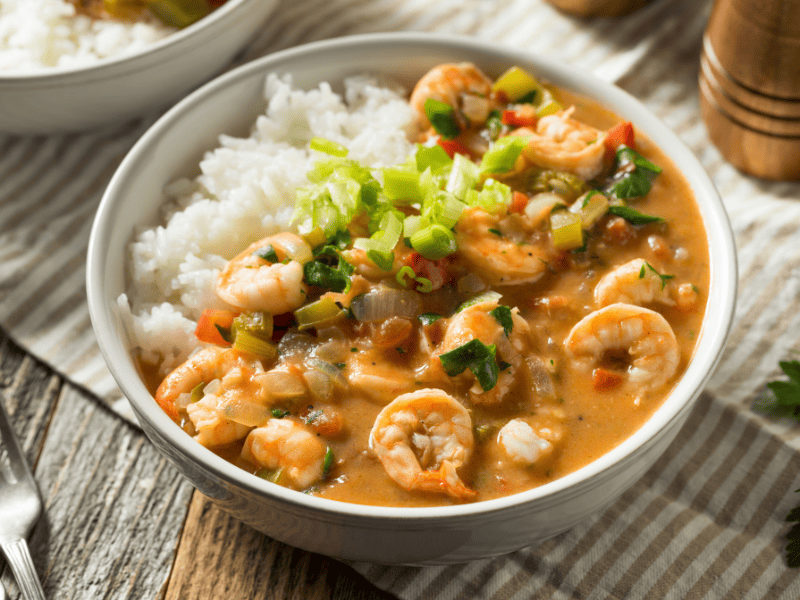
Pastels are a favorite street food in Brazil. They are essentially a hand pie, and can be stuffed with all sorts of delicious fillings, both savory and sweet. Today, we are opting for simplicity and making pastel de queijo. Mild and gooey cheese is encased in a crisp, fried crust for a truly decadent and satisfying treat.
Where Does Pastel de Queijo Come From?
The exact origin of pastels in Brazil is not known. However, many attribute the first recipes to Chinese immigrants. This is due to the similarity between the pastel’s crust and a fried spring roll wrapper. It is thought that Chinese Brazilians adapted their spring roll recipes to suit different tastes, substituting traditional fillings with local ingredients.
Another theory suggests that Japanese immigrants were the first to popularize pastels. During WWII, prejudice against Japanese immigrants grew immensely due to the country’s alliance with Germany. In order to escape persecution, many Japanese Brazilians posed as Chinese, adopting clothing and traditions to disguise their true heritage. Making food with typically Chinese ingredients may have been another way to maintain this facade.
Whatever the history, pastels have become an integral part of Brazilian fast food cuisine. The fillings reflect regional tastes: shrimp and cod are popular in Bahia, while São Paulans favor ground meats. Other common fillings include heart of palm, shredded chicken, requeijao, and, of course, cheese.
What Kind of Cheese is Best for Pastels?
Traditional pastel de queijo uses a mild cheese, like mozzarella or Minas cheese; but you can use any kind of cheese you like, so long as it is suitably melty. Whatever you might use for a fondue, you can use for a pastel de queijo:
- Gruyere
- Emmental
- Cheddar
- Gouda
- Havarti
- Provolone
Feel free to use a blend of your favorites as well. We are sticking with mozzarella and a little aged white cheddar today, but the sky’s the limit for your cheesy filling.
Tips for the Perfect Pastel de Queijo Crust
The crust is very important for pastels: you want a crisp, crunchy texture that is thick enough to hold in all that cheesy goodness, but not so thick it’s hard to eat. Your crust should also have bubbles (remember the spring roll wrapper relationship?).
The bubbles in your pastel de queijo crust are achieved via two key ingredients: alcohol and vinegar. Traditional Brazilian pastels use cachaca for the alcohol, but you can substitute any grain alcohol (rum, vodka, etc.). The alcohol does not impart much taste, as it cooks off during frying. It is simply a means of attaining that light, bubbly crust.
Another important step in ensuring the best crust for your pastel de queijo is letting the dough rest. As with other pastry dough, this allows the gluten in the flour to relax. If you attempt to roll out and cut the dough without resting it, your crust will be tough.
Pastel Dipping Sauce
Pastel de queijo is sometimes served with hot sauce. You can certainly do this with yours, especially if you like heat. We like to pair ours with a little hot honey. In a microwave-safe container, mix half a cup of liquid honey with a tablespoon of red chili flakes (more, if you want spicier). Add in a tablespoon of apple cider vinegar and stir to combine. Heat the mixture in the microwave for two fifteen-second bursts. Let the mixture sit for a few minutes to allow the chili flakes to infuse, then strain them out. Voila!
Freezing Pastel de Queijo
You can easily prepare pastels ahead of time and freeze them until ready to use. Assemble them as you would right before frying, then place them on a baking tray and put them in the freezer. When they have hardened, transfer the pasteis to an airtight container (you may want to wrap them individually in parchment to prevent sticking). The frozen pastel de queijo will keep for up to 4 months. When you are ready to use them, fry them as you would below, keeping in mind you may need a little extra frying time.
Recipe for Pastel de Queijo (Brazilian Cheese Pastries)
Ingredients:
For the Crust
3.5 cups flour (all purpose)
1 egg
¾ tbsp salt
1 cup cold water
1 oz canola or vegetable oil
1 tsp apple cider vinegar
1 oz grain alcohol (cachaca, rum, vodka, etc.)
Oil for frying
For the Filling
4 oz mozzarella cheese, cubed
4 oz aged white cheddar cheese, cubed
Directions:
- In a large bowl, combine the all purpose flour and salt. Add in the egg, water, vinegar, alcohol, and vegetable oil and mix until the dough starts to come together.
- Once you have a soft and pliable dough, knead it on a clean surface for about five minutes until it becomes smooth and elastic. Return the dough to the bowl and cover it with a damp cloth. Let the dough rest for 15-30 minutes.
- After the resting period, divide the dough into smaller portions (about the size of a large marble) and roll each portion into a thin, circular disk. You want around 3-4 inches in diameter. Repeat this process for the remaining dough.
- Place 1 cube of each type of cheese in the center of each disc. Fold the dough over the cheese to form a half moon shape. Press the edges firmly to seal the pastel, using a fork to crimp the edges.
- In a large frying pan, add enough oil to cover the pasteis de queijo. Heat the oil to 350 degrees Fahrenheit (175 degrees Celsius). To check if the oil is ready, drop a small piece of dough into the oil. If it sizzles and quickly rises to the top, the oil is ready.
- Carefully slide the pastel de queijo into the oil and fry until golden brown on both sides, flipping once during the process. Fry in batches and avoid overcrowding the pan. It usually takes about 3-4 minutes per side, but keep an eye on them to prevent burning.
- Once done, remove the pastels from the oil using a slotted spoon and transfer them to a paper towel-lined plate to drain excess oil.
- Let the pasteis cool for a few minutes then serve with your hot honey dipping sauce or with a squeeze of lime juice. Enjoy!
More Great Brazilian Recipes to Try:
- Brazilian Cheese Skewers (Espetinhos de Queijo)
- Croque Monsieur (Bauru de Forno)
- Brazilian Cheese Bread (Pao de Queijo)



